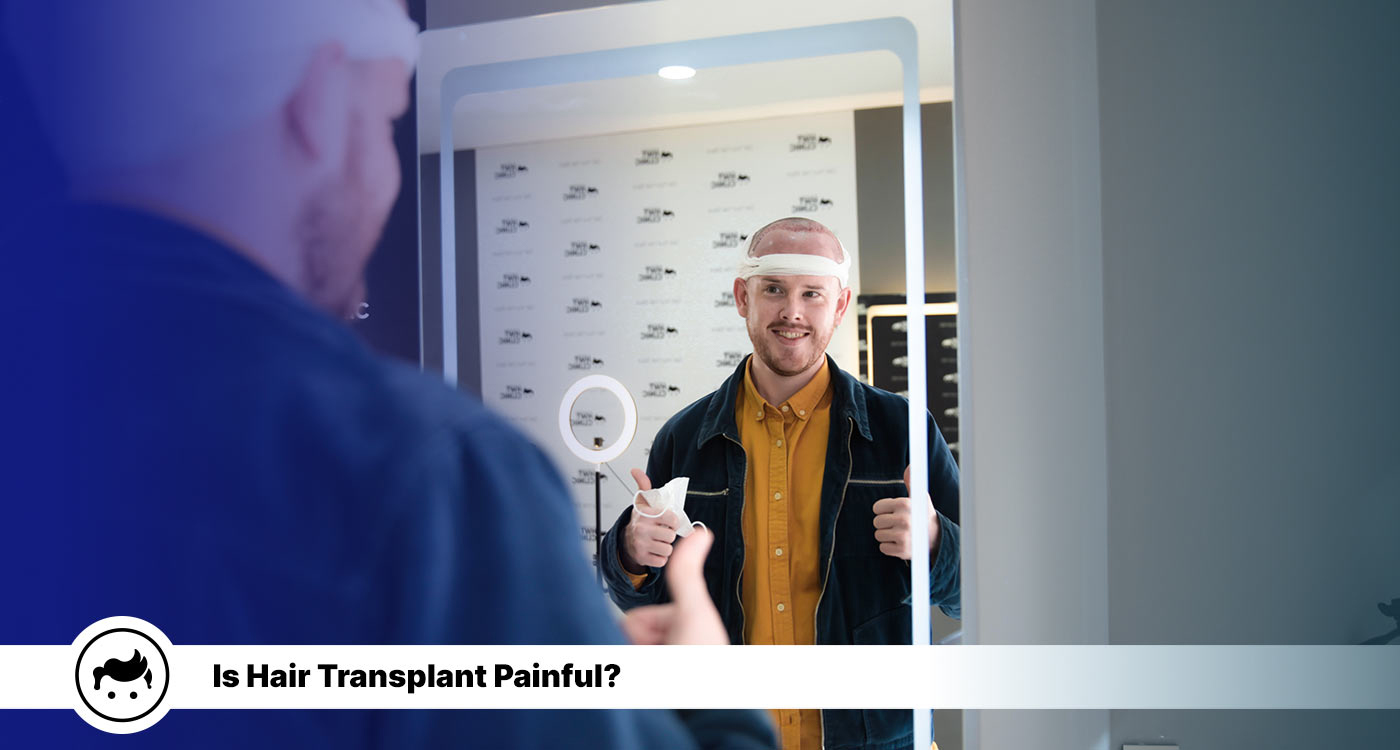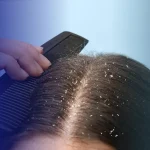
Table Of Content
Hair transplant surgery is a procedure that involves moving hair from one area of the scalp to another. The operation is typically carried out on men and women with thinning or falling hair. One of the main concerns for people considering Turkey hair transplant surgery is whether or not the procedure is painful. Most patients report that the pain is minimal and manageable, while some discomfort is normal during and after the surgery.
A Hair Transplant, known as a hair implant, is a procedure that involves transferring healthy hair follicles from one area of the body to bald or thinning areas. It is used to restore lost hair due to genetics, medical conditions, and aging, and it’s often used by people who want more natural-looking results than the ones provided by traditional toupée treatments. Tiny grafts are taken from the donor site (usually at the back of the head) and placed in the recipient site during the transplantation process, usually on the top of the head or near the front line. The goal is for the new hair to grow naturally within a few months, leading to fuller coverage and improved self-confidence.
Surgeons use a combination of local anesthesia injections, painkillers, and other methods to ensure that the patient is comfortable and relaxed throughout the procedure during Turkey hair transplant surgery. It helps minimize any pain or discomfort the patient experiences before or during the surgery. Additionally, the surgeon works closely with the patient to monitor their comfort level and make adjustments as needed to guarantee the patient is as relaxed as is humanly possible.
Local anesthesia injections are integral to any hair transplant procedure, as they enable surgeons to work without causing significant patient discomfort. Local anesthesia numbs the area and helps keep patients still during the surgery by administering injections directly into the scalp in small doses. It ensures that surgeons fully control each step and precisely execute their technique. Additionally, there is no risk of general sedation or adverse side effects because it is localized. Local anesthesia injections are a necessary component of safe, successful hair transplants for experienced practitioners. They have to perform carefully and precisely so that the patient feels minimal pain while maximizing efficacy. The importance of the process is required not to be understated; not only does it provide comfort for the patient, but it protects them from potential complications caused by inexperience or lack of attention.
No, anesthesia does not cause hair loss. Certain medical procedures cause temporary hair loss due to the stress they place on the body, not to mention permanent hair loss. An allergic response or overdose after a loss is a sign in rare situations; however, the reactions are extremely unusual and are efficiently controlled with adequate care and attention.
Painkillers are an essential component of a surgeon’s medical arsenal. Administered before, during, and after surgery, they relieve acute or chronic pain and help facilitate recovery. Painkillers work by blocking the pathways through which pain signals reach the brain. It has the effect of reducing the patient’s overall level of discomfort. Surgeons administer painkillers to patients for several reasons. Firstly, it allows them to perform surgeries more efficiently since the patient is not constantly distracted by intense pain levels. Secondly, painkillers reduce the risk of post-surgical complications such as infections and blood clots exacerbated by physical stress due to pain. Finally, properly administered painkillers help ensure the patient experiences faster healing times and fewer long-term side effects. Painkillers are necessary components in any successful surgical operation. Surgeons are able to perform procedures with greater precision and fewer risks to the patient by alleviating pain and stress. The thoughtful administration of painkillers helps protect against many potential issues associated with surgery, allowing surgeons to achieve better outcomes for their patients.
Assuring the comfort and relaxation of each patient is an important part of a surgeon’s job. Surgeons help alleviate some of their patient’s fears and anxieties related to the operation or procedure they are undergoing by providing emotional support and physical care. Surgeons take the responsibility seriously because a relaxed patient is more likely to recover fully, while people who remain anxious during the surgery experience longer healing times and even additional health risks. Surgeons, as experienced professionals, understand that creating an atmosphere of assurance and trust between themselves and their patients positively affects outcomes. Thus they strive to provide reassurance through words, gestures, and techniques to ensure the best possible outcome for every patient.
Hair transplant surgeries are becoming increasingly popular, providing a safe and effective way to restore the look of lost or thinning hair. The procedure has become more accessible over time due to recent advances in technology and methods that make it easier than ever to achieve results with minimal scarring or discomfort. There are two types of hair transplant methods:
FUE (Follicular Unit Extraction) is a minimally invasive hair restoration procedure that offers excellent results for people suffering from baldness or thinning hair. Unlike traditional procedures such as hair grafting or hair planting, FUE involves extracting follicles directly from the donor area and transplanting them into areas of thinning or baldness. It makes a much less invasive option and allows for faster recovery times. The advantages of FUE include minimal scarring, decreased pain, and quicker healing time compared with other types of hair transplantation techniques. Additionally, FUE hair transplant is used in both men and women, making it suitable for many individuals who have experienced hair loss due to age, genetics, medical treatments, or stress. The success rate of the technique is very high; generally, 95-100%, and results last up to 15 years if properly maintained. A small punch tool is used to extract follicles one at a time from the donor area on the back or sides of the head during an FUE procedure. The follicles are then carefully transferred to incisions in the recipient area where the hair is sparse or absent. The surgeon has to consider the direction and angle of natural growth to achieve maximum coverage and density as each follicle is implanted individually. The patient’s hairs grow naturally in the transplanted area within 2-3 weeks once the procedure is complete. FUE provides excellent results for people experiencing hair loss. However, it requires skill and precision to ensure an optimal outcome. FUE continues to be one of the most sought-after methods for restoring hair, with its relatively high success rate and minimal discomfort.
Follicular Unit Transplantation (FUT), or STRIP, is a surgical hair restoration procedure that has been around for decades and has proven to be one of the most successful treatments available today. The process involves surgically removing a strip of donor skin from the back of the scalp, which contains healthy, permanent hair follicles. The follicles are then grafted into small groups known as follicular units in areas on the head where balding has occurred, a technique often referred to as ‘hair grafting’ or ‘hair planting’. The advantage of the technique is that it provides more density per square centimeter than other techniques, such as FUE (Follicular Unit Extraction). The procedure begins with local anesthesia to reduce discomfort during the transplantation procedure. Next, the surgeon removes the donor skin containing the follicles in one single piece. The grafts are then dissected under magnification to ensure maximum accuracy and safety when placed in their new location. They are allowed to heal and eventually begin producing natural hair growth in the recipient area once all the grafts have been placed correctly. FUT hair transplant delivers outstanding results with a 95-98% patient satisfaction rate. Patients achieve fantastic results if they follow post-operative instructions carefully and adhere to recommended aftercare protocols.
The pain level experienced during a hair transplant surgery varies depending on the specific technique used and the individual’s pain tolerance. Generally, FUT (Follicular Unit Transplant) method is considered more painful than FUE (Follicular Unit Extraction) method. The FUT method involves removing a strip of skin from the scalp, which is more painful than the small punches used in the FUE method. However, the pain associated with both methods is typically manageable with local anesthesia, and patients typically report only mild discomfort after the procedure.
Follicular Unit Extraction (FUE) hair transplant surgery is considered the most comfortable and minimally invasive of all hair transplants. It involves a relatively painless procedure in which individual follicles are extracted from donor areas on the scalp, usually at the back or side of and then meticulously placed into recipient areas where baldness or thinning has occurred. It makes for faster healing times and less post-operative discomfort than other surgical methods, as there are no sutures required with FUE. Furthermore, the patient returns to normal activities immediately after treatment without visible scarring.
A person experiences some discomfort or pain in the scalp after a hair transplant, as well as swelling and redness in the treated area. They experience some itching or tingling sensations. The symptoms are usually temporary and are managed with over-the-counter pain medication and cold compresses. The transplanted hair falls out within the first two weeks, but new hair growth begins within three to four months. The final results of the transplant are not fully visible for up to a year. It’s important to follow the post-operative instructions provided by the surgeon to ensure proper healing and the best possible outcome.
Proper hair-washing techniques are crucial for achieving optimal results following a hair transplant, and patients are instructed on the correct method at the clinic.
The hair-washing process consists of three key steps:
Yes, the pain after hair transplant surgery is quite significant. Most patients experience swelling, soreness and redness in the area of their scalp where the grafts were inserted. Additionally, there is a dull throbbing sensation or intense itching in the area for several days post-surgery. The discomfort is severe enough to require mild pain medication or sedatives prescribed by a physician.
The pain and discomfort associated with hair transplant surgery are typically minimal and are managed with over-the-counter pain medication. Most patients report only mild discomfort during the first 48 to 72 hours after the procedure, which typically subsides within a week. Some patients experience slight swelling or redness around the treatment area, but it resolves within a week. However, it’s important to note that every person’s experience is unique and varies depending on the extent of the surgery, the patient’s pain tolerance, and the aftercare instructions provided by the surgeon. It’s important to follow the post-operative instructions provided by a surgeon to ensure proper healing and minimize any pain or discomfort.
Yes, hair transplants are safe. Patients expect natural-looking results with minimal side effects and a low risk of complications with modern medical professionals’ careful and skillful techniques. The entire process is relatively quick and straightforward, with most individuals feeling little to no discomfort in the hands of experienced surgeons. Common side effects, such as minor swelling or redness, should resolve within a few days. Recovery takes a bit longer but is usually completed without major issues for more intensive treatments such as scalp reduction surgeries.
Yes, a hair transplant is worth it in some cases. A hair transplant procedure offers a viable solution for individuals with baldness or thinning hair, depending on their circumstances. The outcome’s success depends largely on the patient’s commitment to follow pre-and post-operative instructions and factors such as age, donor area health, and scalp elasticity. An experienced surgeon considers all the elements when determining whether a person is a suitable candidate for a hair transplant or not. Hair transplants have provided people with improved self-confidence and satisfaction with their appearance. Choosing a qualified clinic and doctor for hair transplantation is very important. In addition, hair transplantation costs should also be investigated. Turkey hair transplant costs are affordable and there are quality clinics. Turkey is a preferred destination for international patients for hair transplantation operations.




